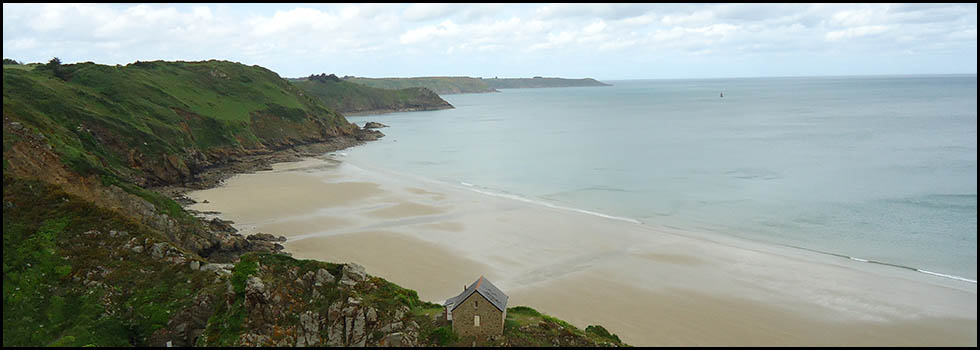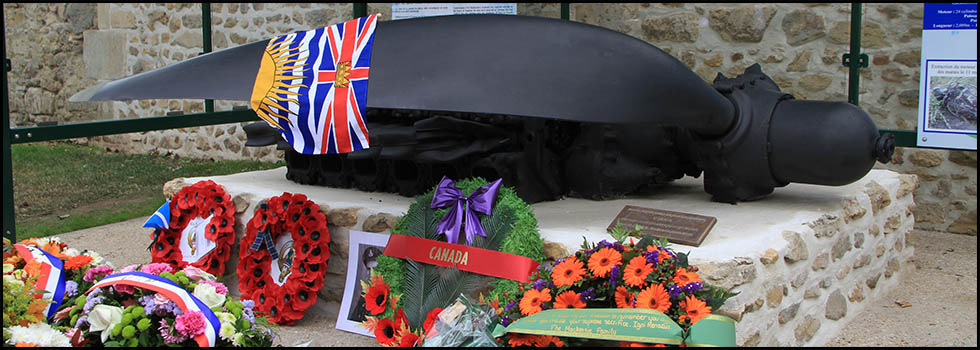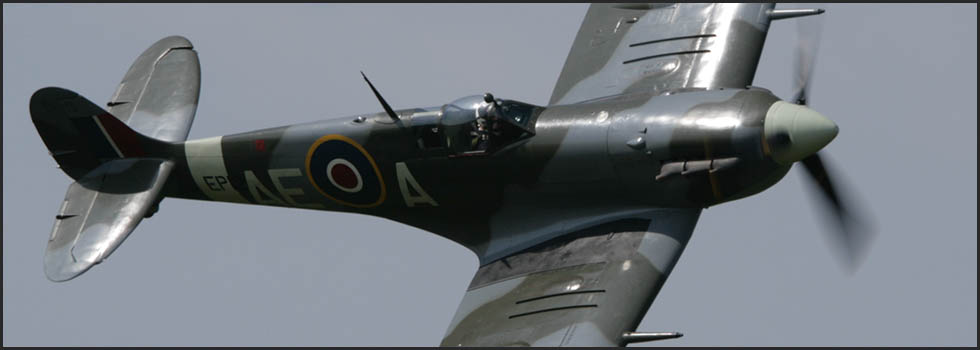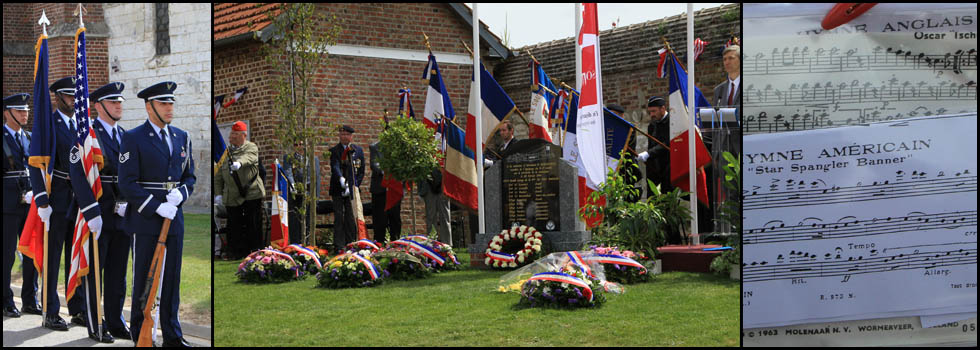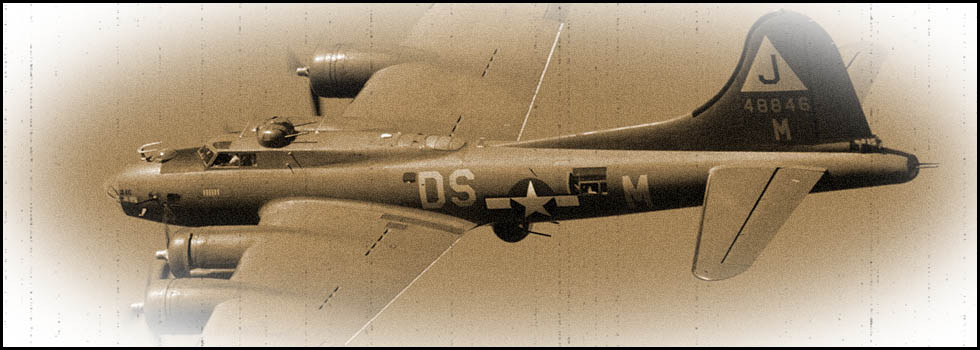Night of 12 to 13 June 1944
Handley-Page Halifax MkIII LW675
LK-B
RAF 578 Squadron
Thieux (Oise)
Copyright © 2025 - Association des Sauveteurs d'Aviateurs Alliés- All rights reserved -
En français ![]()
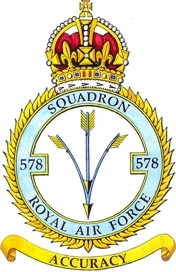
Mission: Bombing of railway installations at Amiens Saint-Roch and Longueau (Somme).
25 aircraft from Squadron 578 took off from Burn Airfield (Yorkshire) at around 11:15 p.m. Among them was Halifax LW675, loaded with 18 bombs of 500 lbs. The bombing, carried out at around 1:30 a.m. from an altitude of approximately 10,000 ft, proved to be relatively accurate.
During the return flight, at around 2 a.m. and probably after being attacked by a night fighter, the Halifax LW675 crashed near the village of Thieux.
Another Halifax from Squadron 578 was shot down by anti-aircraft fire during this mission and crashed in Mailly-Raineval (Somme). All seven crew members were killed.
The crew of Halifax LW675 :
|
P/O Clifford NEWTON |
Pilot |
22 |
RAF |
|
P/O George Caithness LAWRENCE |
Navigator |
23 |
RAF |
|
P/O William RENTON |
Bomb aimer |
RAF |
|
|
F/S Sydney Evan Wallace CASS |
Wireless operator |
22 |
RAF |
|
F/S Geoffrey Raymond DEELEY |
Flight engineer |
20 |
RAF |
|
Sgt. James B. REID |
Mid-upper gunner |
22 |
RAF |
|
Sgt. Robert A. HOLLOCKS |
Rear gunner |
20 |
RAF |
"On 13 June, at 2 a.m., an English four-engined aircraft crashed 700 metres east of Thieux station. Aircraft destroyed. 4 occupants killed. No civilian casualties or damage".
In fact, five bodies were found among the wreckage of the Halifax.
Only Sergeants James Reid and Robert Hollocks managed to evacuate the stricken aircraft. Having seen the bomber fall in flames and a parachutist descend, Marcel Bertin, 40, stationmaster at Wavignies, and his 17-year-old son Lucien went in search of him and found Sgt. Robert Hollocks in a field known as ‘Le Champ Renard’. They took him back to their home. The airman was comforted, fed and given civilian clothes. The next day, he was entrusted to Henriette Preuvost, where he was reunited with Sgt. James Reid. They were housed there until 28 June.
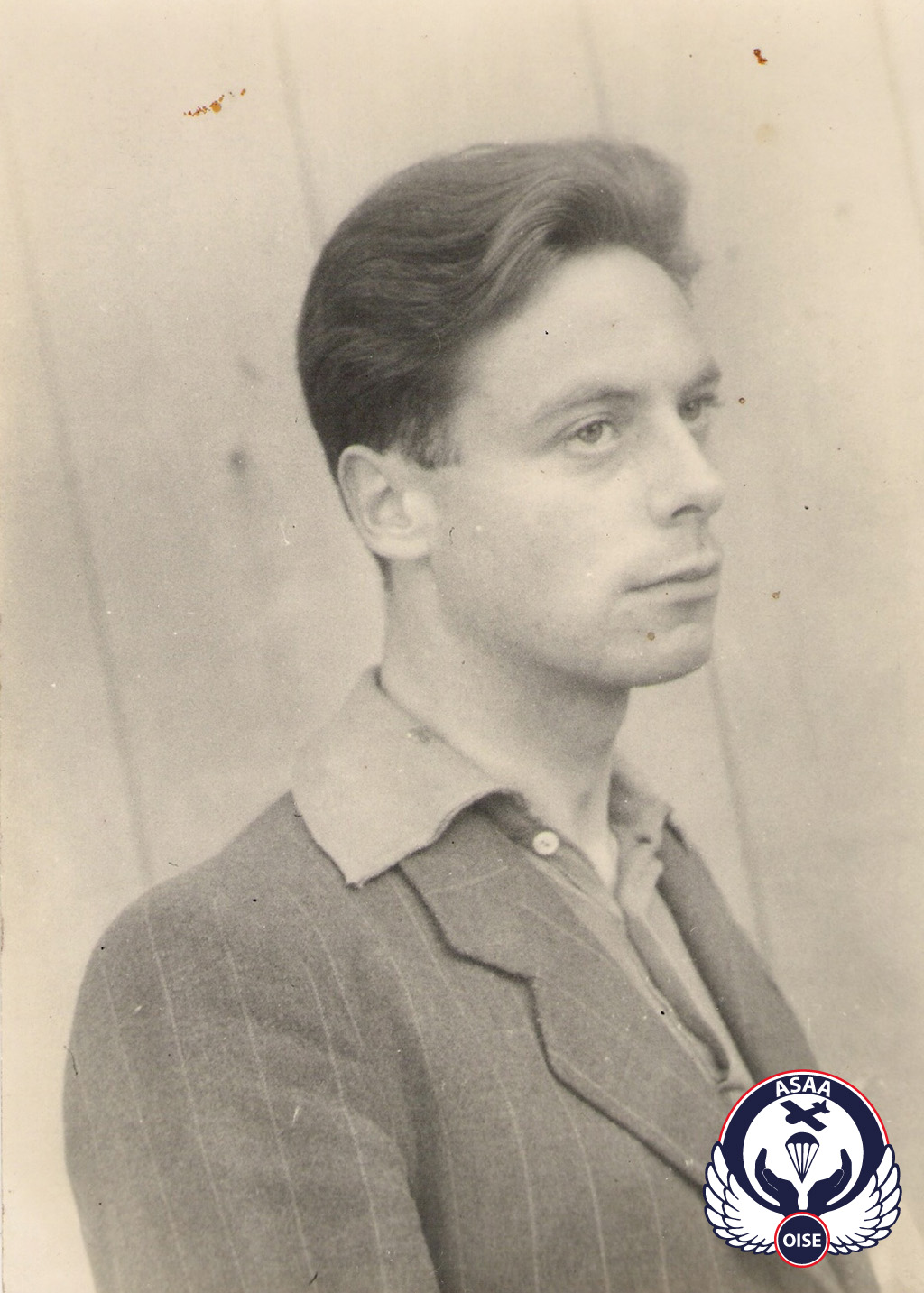
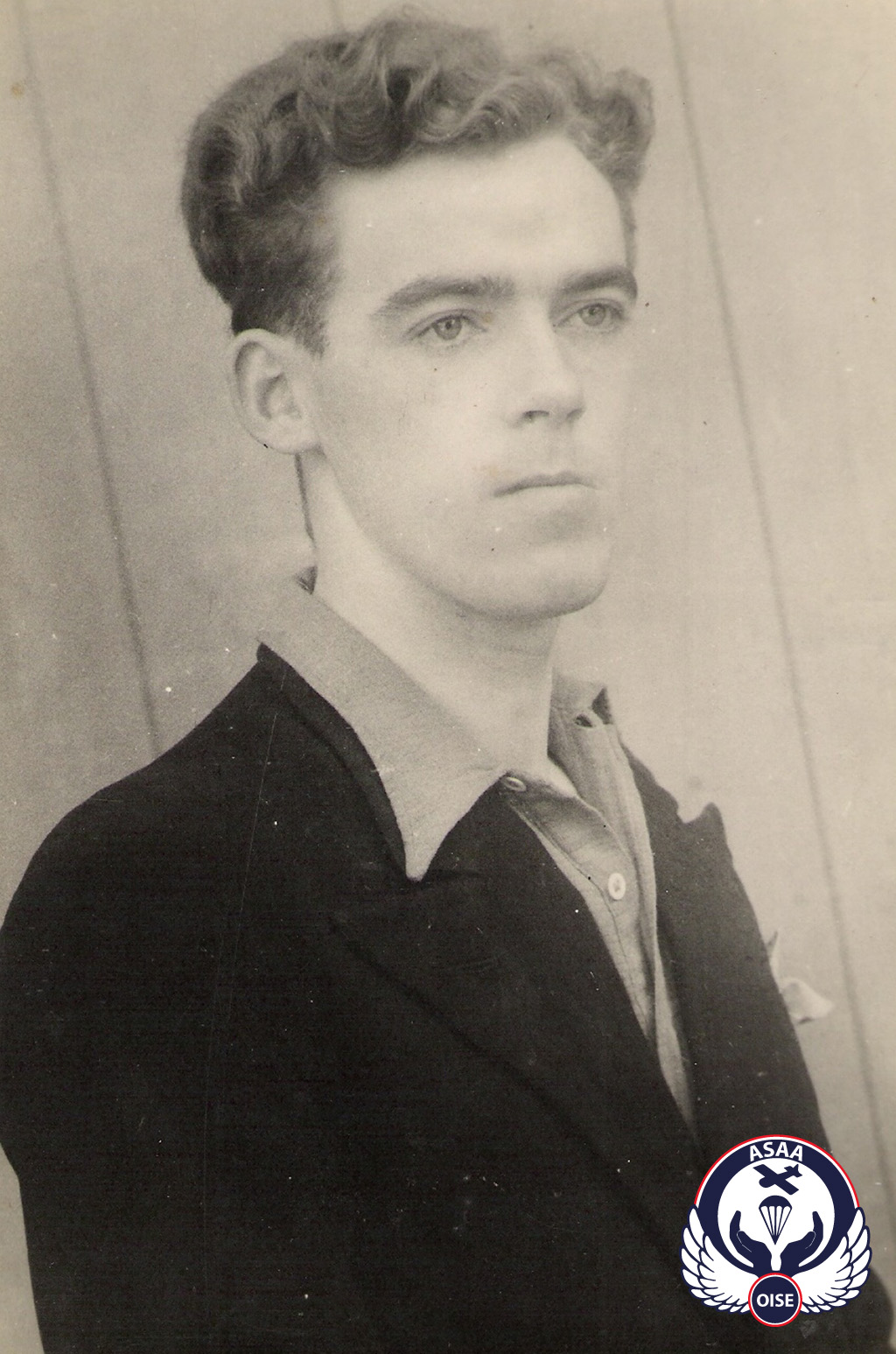
Sgt. Robert A. Hollocks Sgt. James B. Reid
Some time later, James Reid was entrusted to Edmond and Jeanne Legras, village grocers.
They were subsequently shared between different families in the village of Wavignies.
James Reid and Robert Hollocks then stayed in Thieux until 9 July, notably with Dominique and Berthe Martin and their children Jacques and Huguette. At the slightest alert, the two airmen would go down to the cellar.
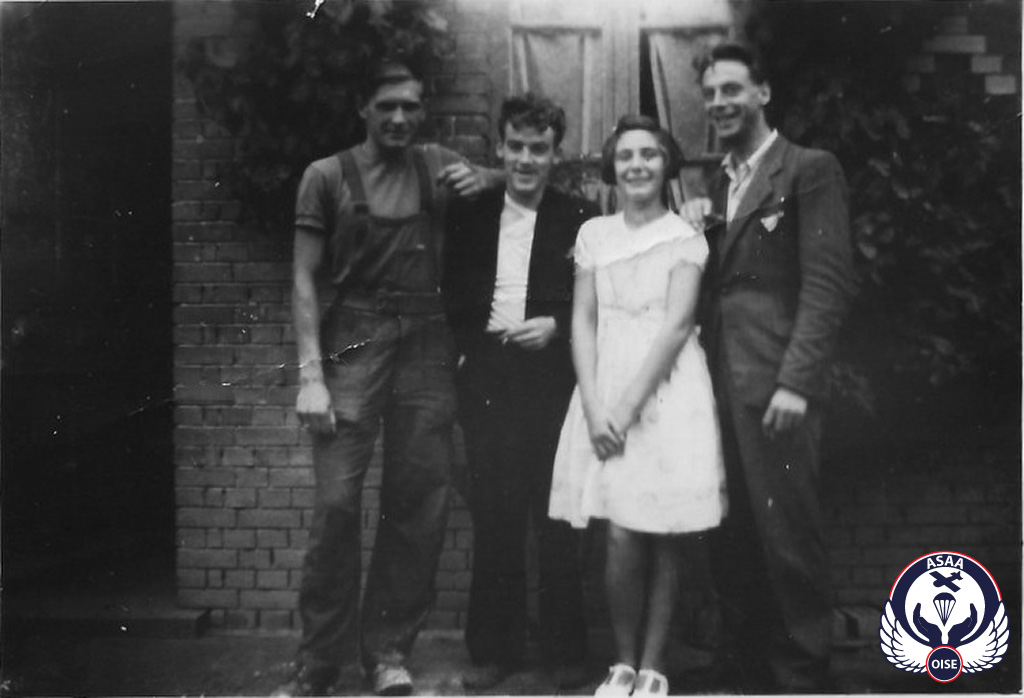
Robert A. Hollocks and James B. Reid with Jacques and Huguette Martin in Thieux.
A few days after the plane went down, a religious service was held in the church in Thieux, led by priest Colineau. A large crowd sang "La Marseillaise" in the presence of Countess Colette de Baynast. The coffins of the five airmen were placed on the back of a horse-drawn cart and then taken to the cemetery. Two other vehicles followed, loaded with flowers.The ceremony was attended by representatives of the region's resistance organisations in spite of the German occupation.The ceremony was attended by representatives of the region's resistance organisations in spite of the German occupation.
The following day, Robert Hollocks and James Reid visited the graves of their crewmates.
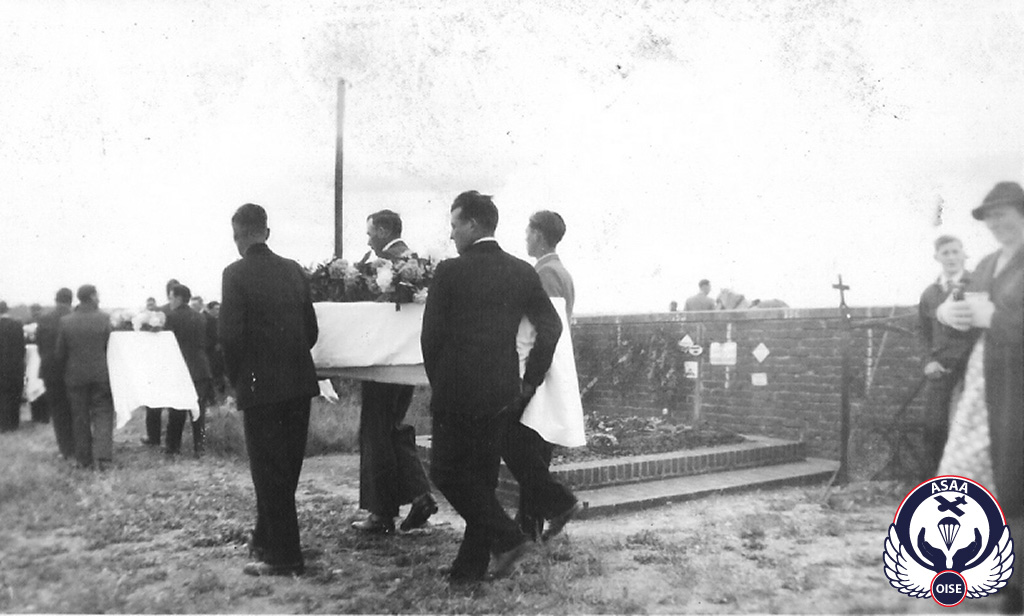
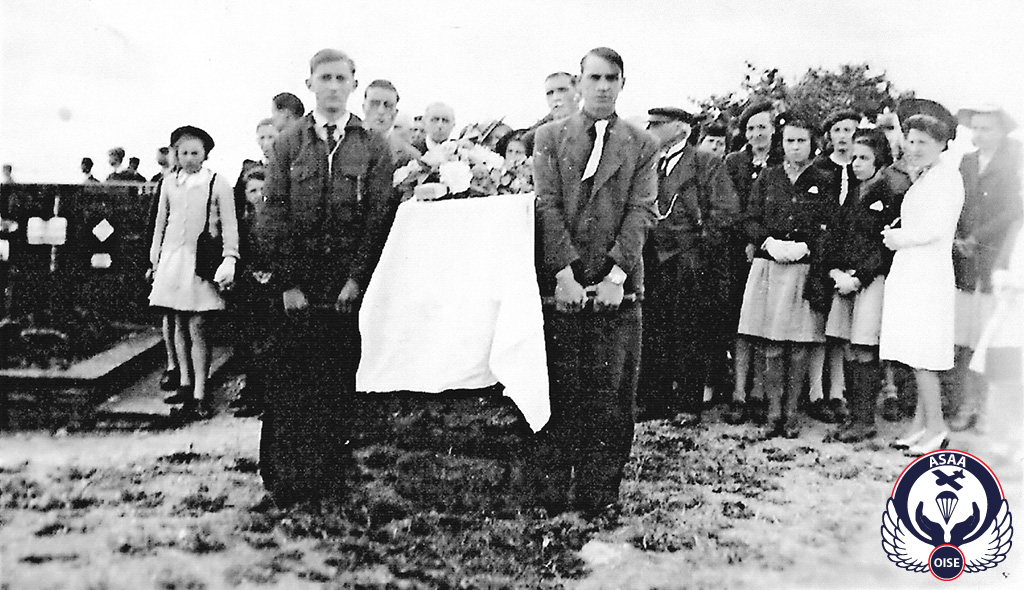
Left: Lucien Bertin carrying one of the coffins.
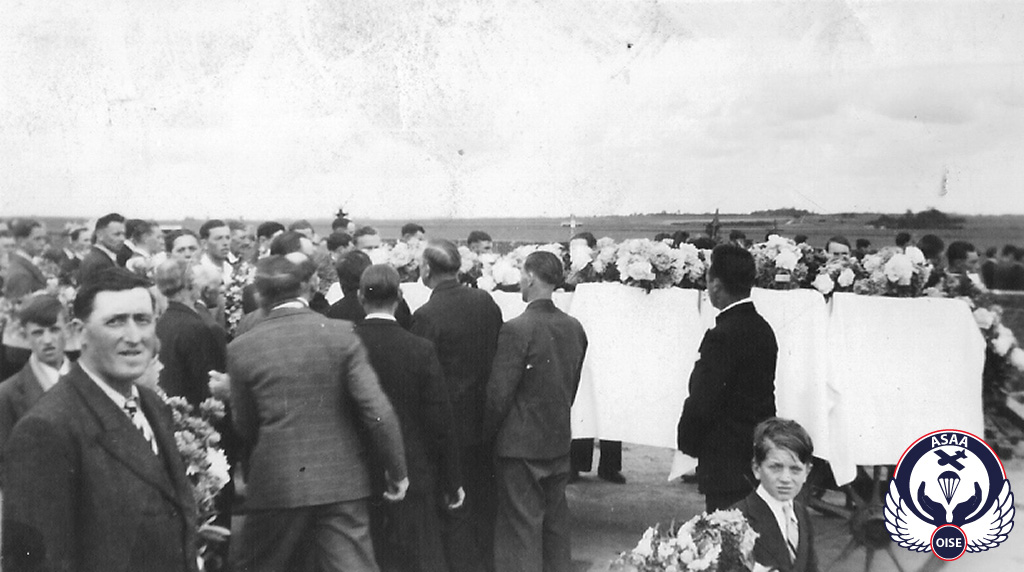
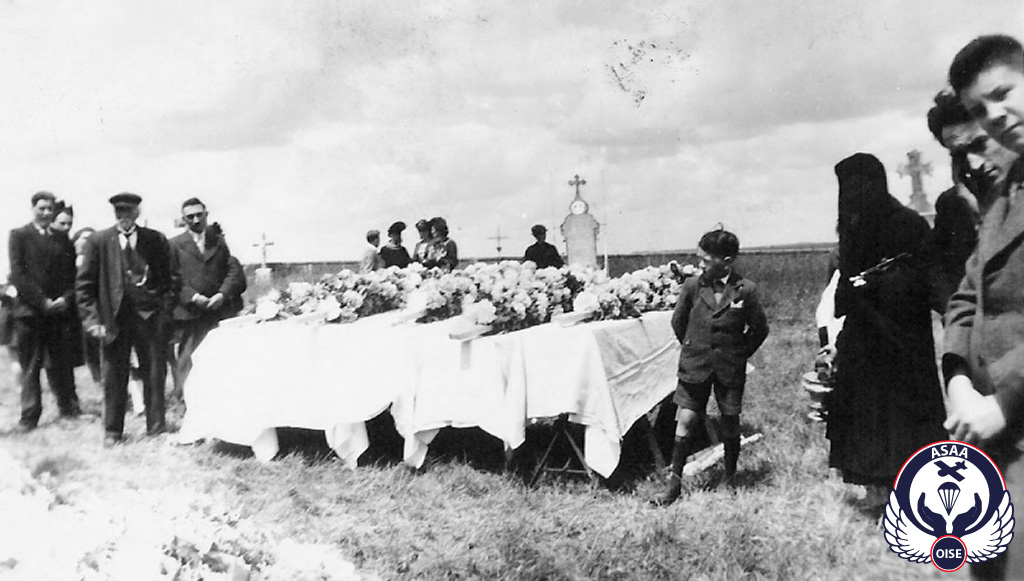
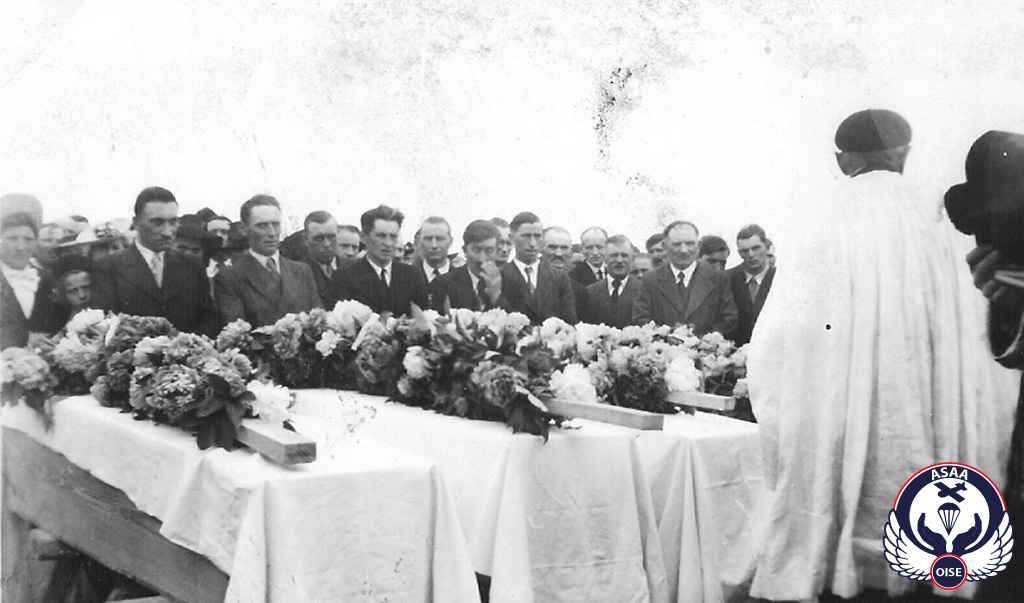
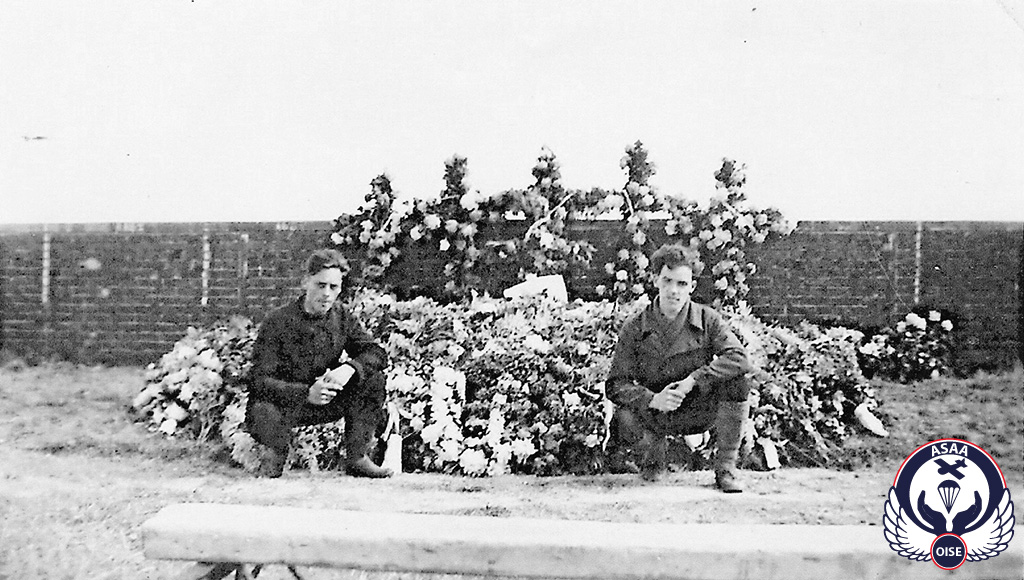
Sgts Robert A. Hollocks and James B. Reid in front of the graves of their crewmates.
Transcription of an article published in « Le Patriote de l'Oise » on 24 February 1945:
"Thieux - It will be remembered that during the night of 12 to 13 June, an English aircraft was shot down on the territory of our village. Five of the seven members of the crew died gloriously, while two were saved and escaped enemy search thanks to the efforts of the local resistance. We also remember the beautiful and moving funerals given to our five heroes. All this in the midst of the Boche occupation".
The president of the Thieux Liberation Committee received the following letter from the mother of airman Sergeant Cass, one of the five heroes:
"Dear Sir,
Yours sincerely
A. H. E. J. Cass"
Robert Hollocks and James Reid were later taken in by the Ansauvillers resistance group. Louis Delamare took them in for two months, until the Liberation.
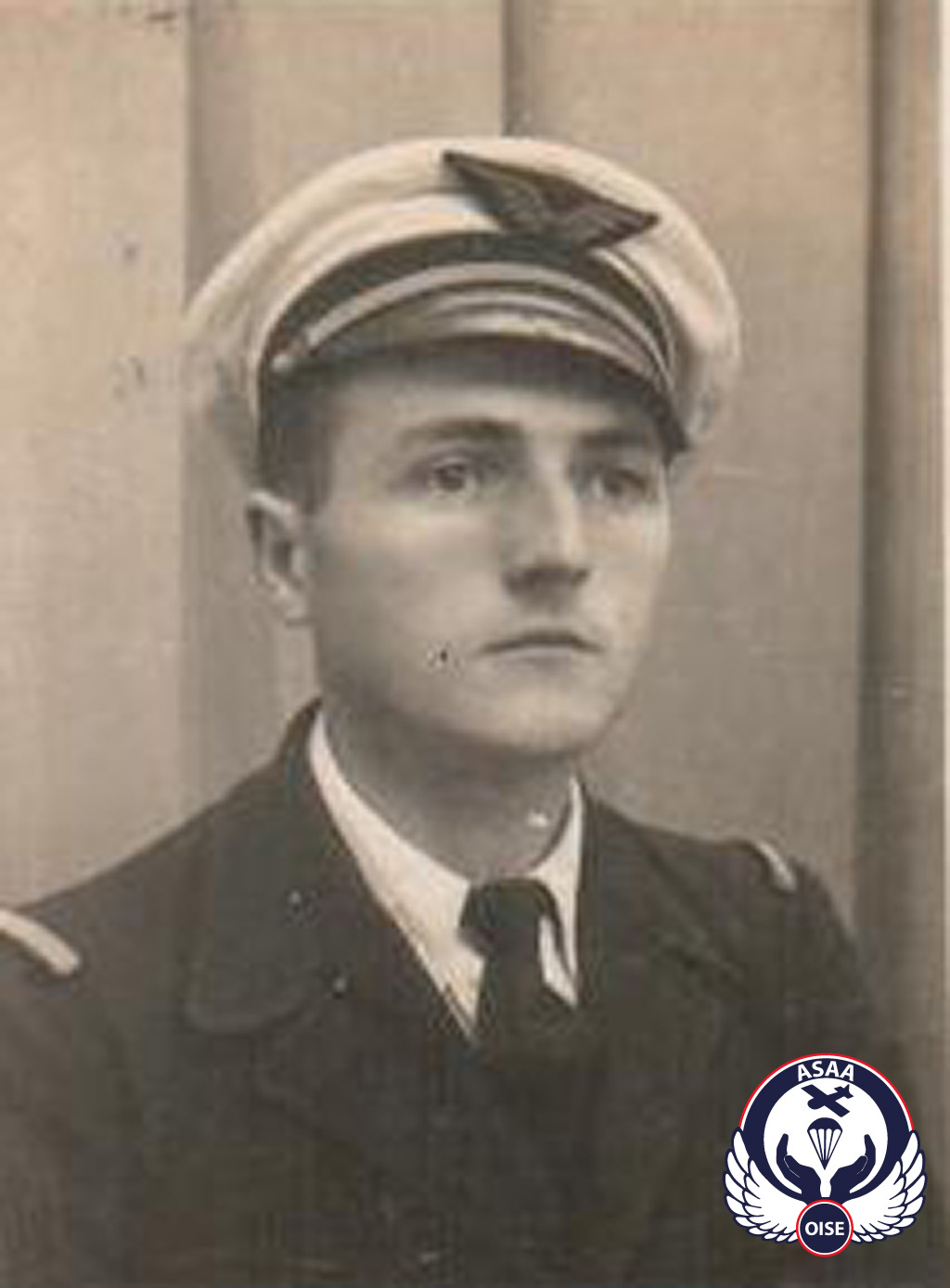
Louis Delamare
In May 1971, Georges Jauneau certified:
Incorporated into the “Jacques Bonhomme” detachment, he played a very active role in the Resistance in his sector: recruiting patriots for combat groups, recovering and refurbishing weapons abandoned during the many engagements that took place in this part of the area in 1940, building up stocks of weapons and ammunition as well as those we brought back in April 1943 from Noyon in a van with Messrs Delamarre and Julien Sorel, from Valescourt, these weapons coming from several parachute drops received by the OCM in the Noyon region and some of which had been made available by the OCM's Departmental Headquarters. The main depots were located at the Château of Wavignies and the Catillon-Fumechon cemetery.
- July 1944 - Some of the weapons dropped at Valescourt were transported to Froissy, Crèvecœur-le-Grand and Breteuil in a van from the Wavignies sugar factory.
In June 1944, he was personally appointed military commander of the sector (Wavignies-Ansauvillers-Sérévillers-Gannes) with the rank of second lieutenant.
From 9 July to 9 September 1944, he sheltered two British parachutists in his home, which he kept despite the presence of three SS soldiers occupying his house.
During the Liberation battles, with 50 men, he liberated the communes of Sérévillers and Ansauvillers and took 17 German prisoners.
Mr Delamare was called in to reinforce the Wavignies group, which was fighting a large German unit. He and his men fought in the outbuildings of the château, which the Germans had set on fire after killing Mr Vincenot, the deputy military commander, who was defending the entrance with his comrades.
During these operations, Mr Delamare's detachment took 70 prisoners and seized three lorries, two light vehicles, a motorbike and a tracked vehicle. This equipment was handed over to me and stored at Saint-Just-en-Chaussée, where the Oise military subdivision took possession of it after the Liberation".
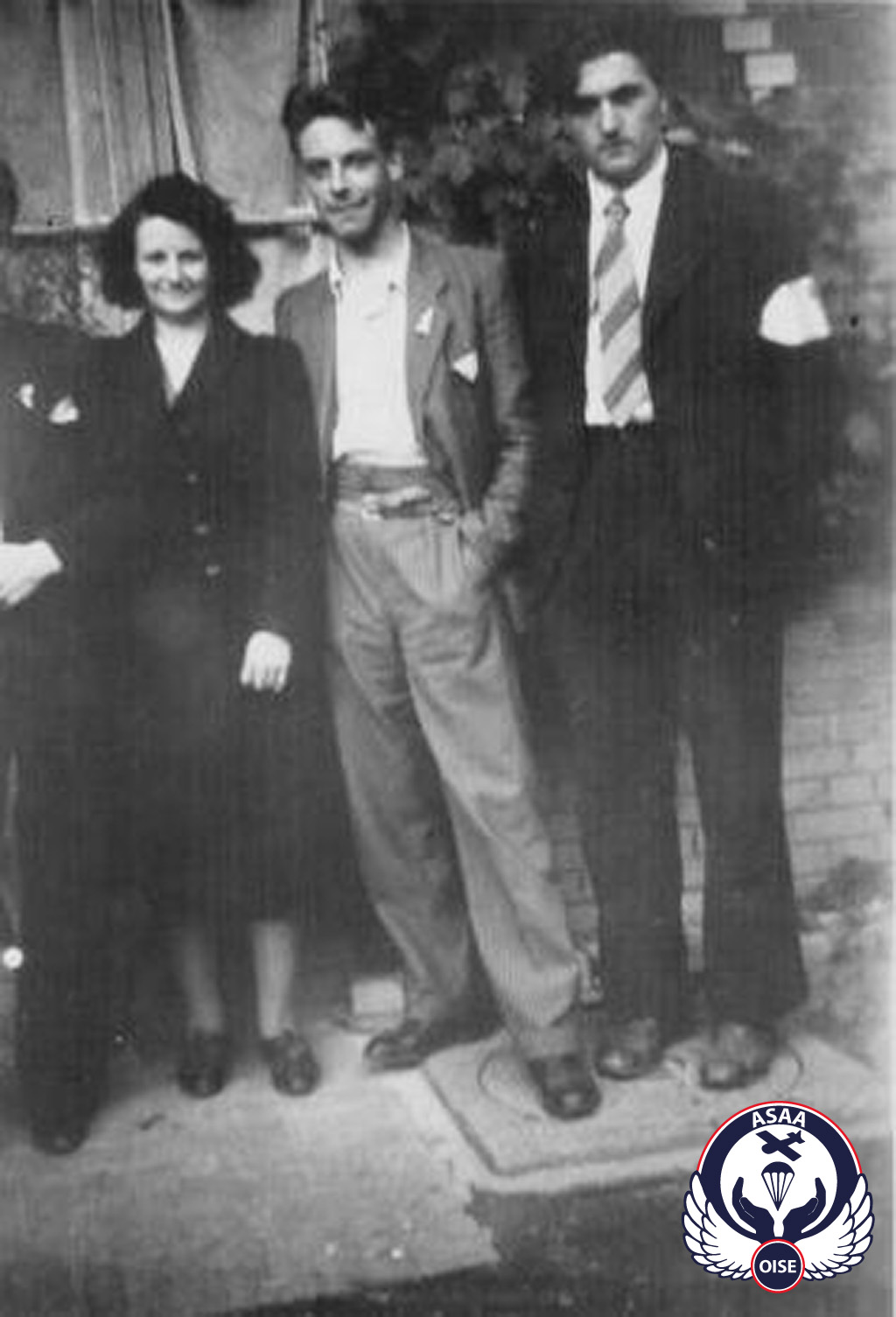
Robert Hollocks and the Delamare family.
Testimony from Thérèse Peton, who was 10-year-old at the time and lived in Ansauvillers:
"One day, the two airmen came with the Delamarre family to have lunch with us. The menu included mashed potatoes, a real treat in those wartime days! Earlier, my parents and I had been invited to the Delamares' house, where they were introduced to us as cousins. One of them had a French vocabulary of no more than about twenty words... and with an accent that astonished me".
After the Liberation of the region, they flew back to England from Beauvais airfield.
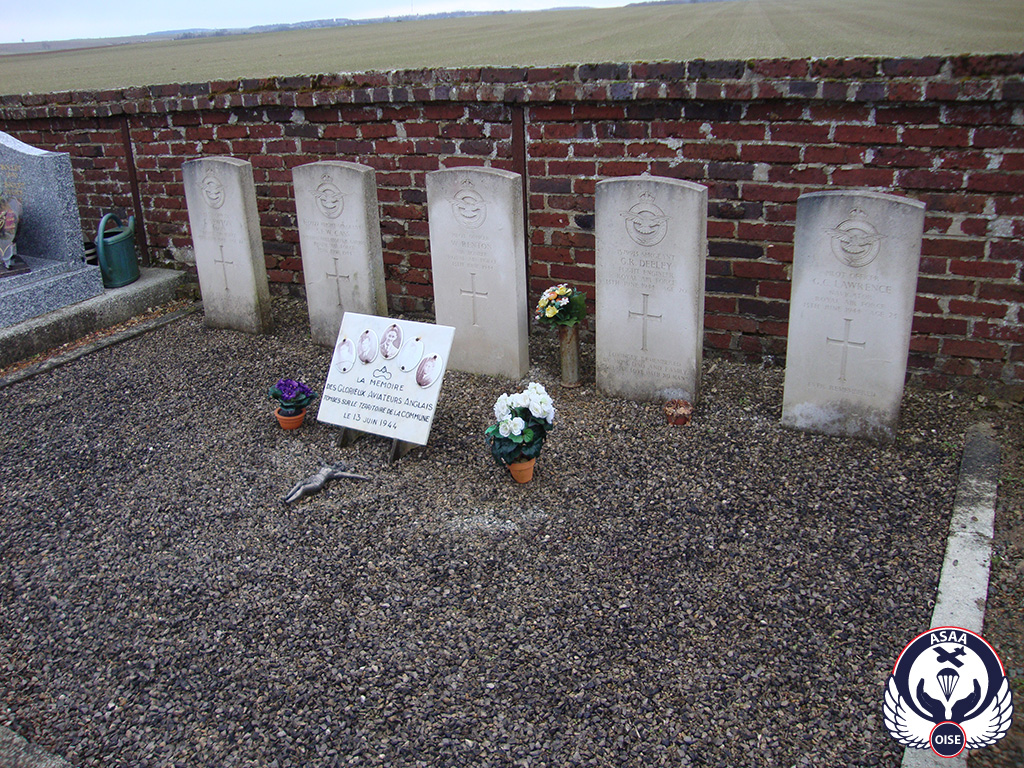
Thieux Cemetery
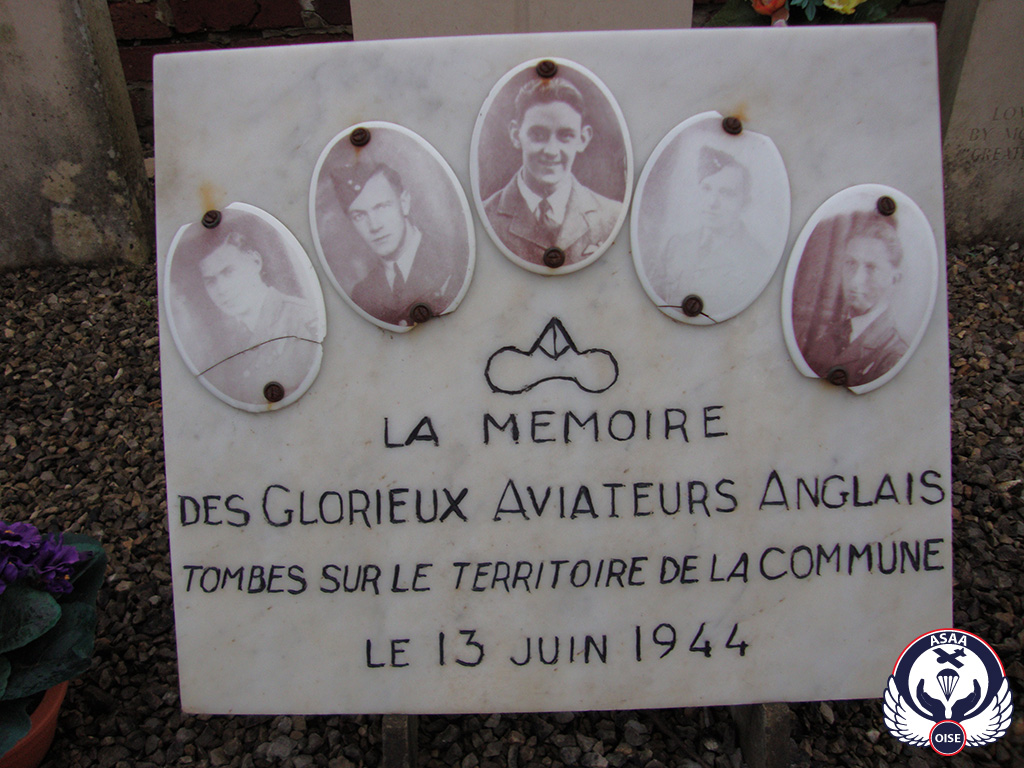
13 September 2025 - Ceremony in memory of the crew of Halifax LW675

